 by our College Data Analytics Team
by our College Data Analytics TeamGannon total enrollment is approximately 4,251 students. 2,723 are undergraduates and 710 are graduate students.
Male/Female Breakdown of Undergraduates
The full-time Gannon undergraduate population is made up of 61% women, and 39% men.
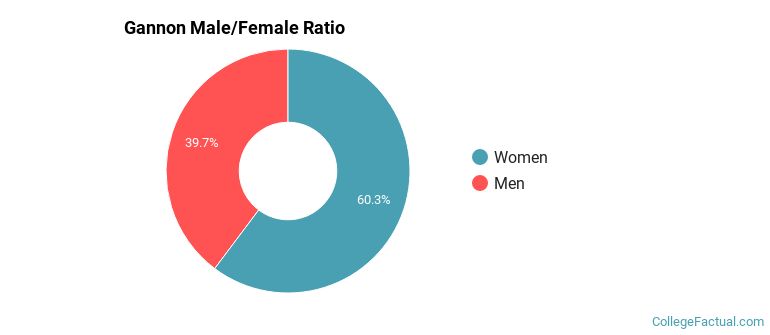
For the gender breakdown for all students, go here.
Gannon Racial/Ethnic Breakdown of Undergraduates

| Race/Ethnicity | Number |
|---|---|
| White | 1,970 |
| International | 238 |
| Black or African American | 151 |
| Hispanic | 121 |
| Multi-Ethnic | 107 |
| Unknown | 84 |
| Asian | 45 |
| Native Hawaiian or Pacific Islander | 2 |
See racial/ethnic breakdown for all students.
Male/Female Breakdown of Graduate Students
About 70% of full-time grad students are women, and 30% men.
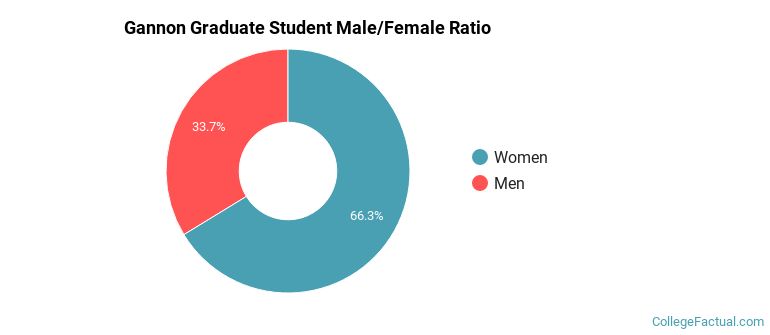
For the gender breakdown for all students, go here.
Gannon Racial-Ethnic Breakdown of Graduate Students
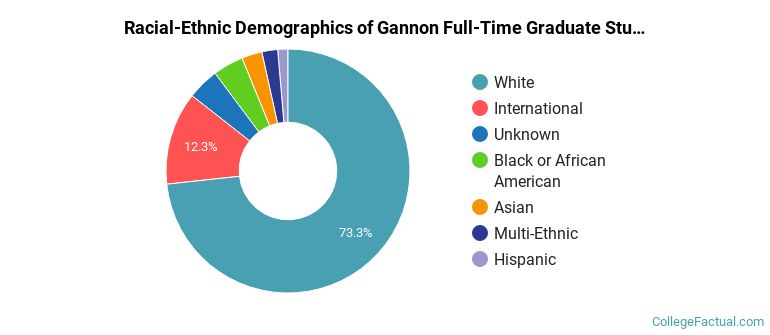
| Race/Ethnicity | Number |
|---|---|
| White | 510 |
| International | 77 |
| Black or African American | 44 |
| Unknown | 30 |
| Asian | 24 |
| Multi-Ethnic | 13 |
| Hispanic | 10 |
| Native Hawaiian or Pacific Islander | 1 |
See racial/ethnic breakdown for all students.
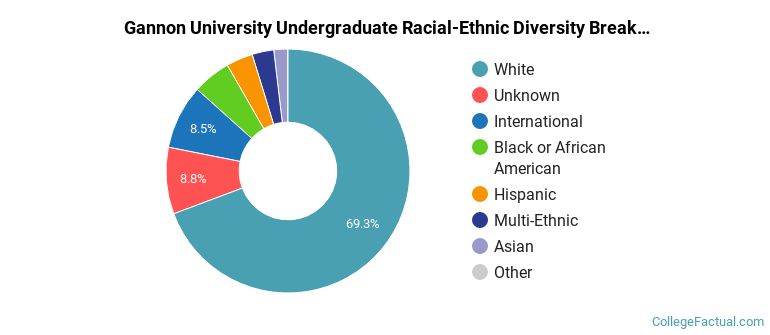
| Race/Ethnicity | Number |
|---|---|
| White | 2,875 |
| Unknown | 437 |
| International | 351 |
| Black or African American | 222 |
| Hispanic | 144 |
| Multi-Ethnic | 130 |
| Asian | 83 |
| Native Hawaiian or Pacific Islander | 3 |

There are approximately 2,645 female students and 1,606 male students at Gannon.
Gannon ranks 841 out of 2,183 when it comes to geographic diversity.
32.47% of Gannon students come from out of state, and 6.5% come from out of the country.
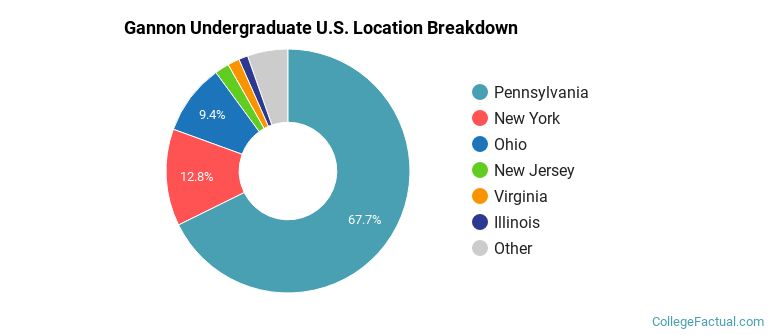
The undergraduate student body is split among 20 states (may include Washington D.C.). Click on the map for more detail.
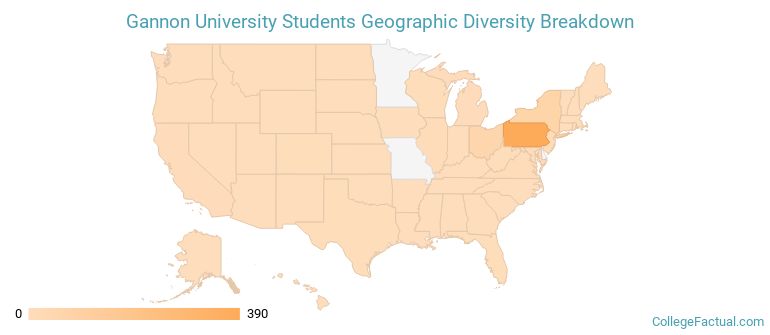
| State | Amount |
|---|---|
| Pennsylvania | 390 |
| New York | 74 |
| Ohio | 54 |
| New Jersey | 11 |
| Virginia | 9 |
Students from 61 countries are represented at this school, with the majority of the international students coming from India, Saudi Arabia, and China.
Learn more about international students at Gannon.
A traditional college student is defined as being between the ages of 18-21. At Gannon, 51.48% of students fall into that category, compared to the national average of 60%.
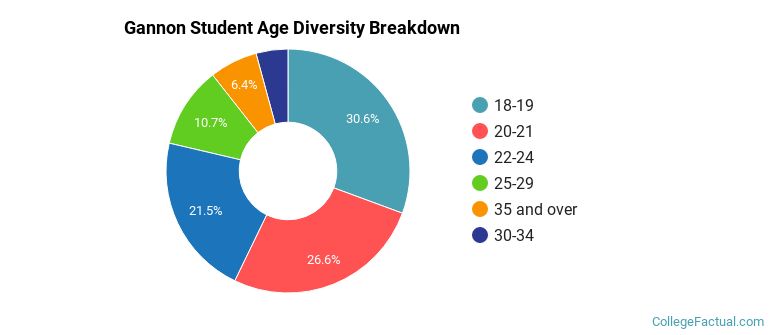
| Student Age Group | Amount |
|---|---|
| 18-19 | 1,144 |
| 20-21 | 992 |
| 22-24 | 803 |
| 25-29 | 401 |
| 35 and over | 238 |
| 30-34 | 158 |
| Under 18 | 0 |
Footnotes
*The racial-ethnic minorities count is calculated by taking the total number of students and subtracting white students, international students, and students whose race/ethnicity was unknown. This number is then divided by the total number of students at the school to obtain the racial-ethnic minorities percentage.
References
Department of Homeland Security Citizenship and Immigration Services
Learn more about how College Factual creates their Diversity Rankings.